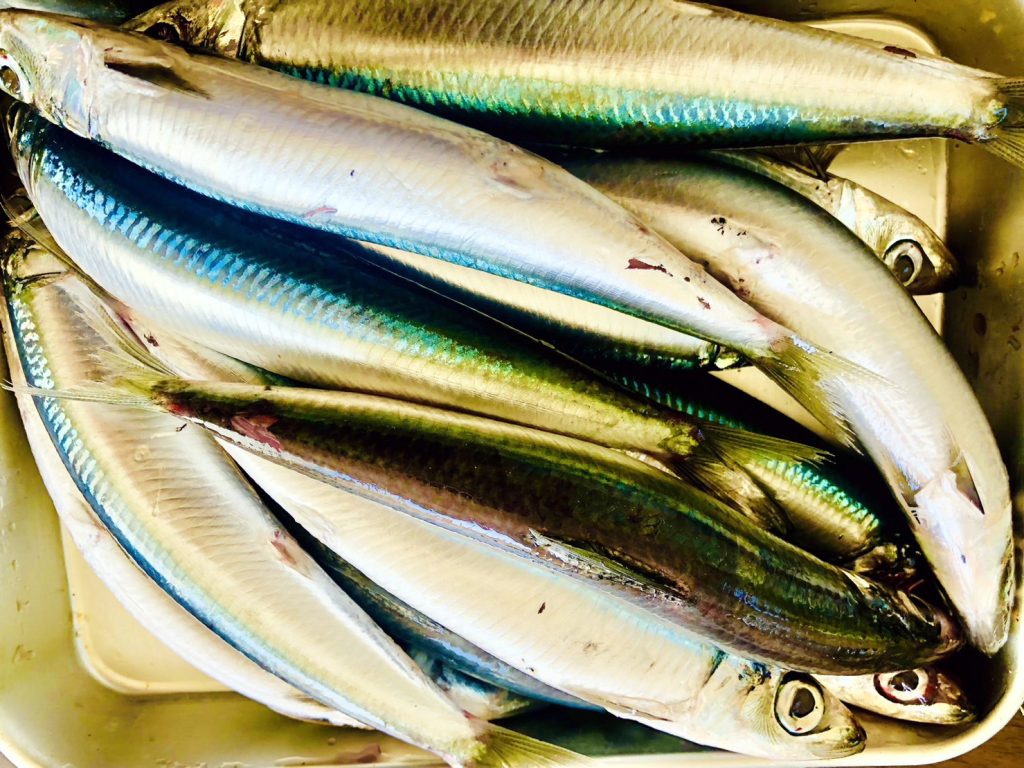
In the waters near Japan, the main types of sardines caught are Ma-iwashi, Urume-iwashi, and Katakuchi-iwashi. The term ‘Iwashi’ is a general name for these, and sometimes it refers specifically to Ma-iwashi. Sardines are generally abundant in catch, and they are essential as natural bait for many other marine creatures, including humans. In a way, it’s as if they were born to be eaten by various living beings, not just humans. The addition of “弱” (weak) to the “魚” (fish) radical in writing “鰯” might also have come from such circumstances.
When we talk about ‘秋イワシ’ (autumn sardines), it typically refers to Ma-iwashi caught in the autumn. While Ma-iwashi is said to be in season from June to July, the rich and fatty Ma-iwashi of autumn is also exceptional, which is why it’s called ‘秋イワシ.’ On the other hand, the Katakuchi-iwashi in the photo is the most caught fish, and it’s in season right now. Fresh sashimi made from Katakuchi-iwashi is said to be the most delicious. Shirasu are young Katakuchi-iwashi, and the main ingredient for anchovies commonly used in Western cuisine is also Katakuchi-iwashi.
Sardines are gaining increasing attention due to their high content of EPA, which lowers neutral fat levels in the blood and has vascular dilation functions, and DHA, which activates brain functions, found in their blood.
日本近海で取れるイワシは主にマイワシ、ウルメイワシ、カタクチイワシです。イワシはこれらの総称でもあり、ときにはマイワシだけをさすこともあります。イワシは一般に漁獲量も多く、他の魚をはじめ多くの海産動物の天然餌料 (じりょう)としても大切です。言ってみれば、人間をはじめ、他の生き物に食べられるために生まれてきた様な魚です。魚偏に弱いと書いて鰯と書くのもその辺から来たのかも知れません。秋イワシと言えば、一般的には秋に取れるマイワシを指します。マイワシの旬は6月から7月頃と言われていますが、脂の乗った秋のマイワシもまた格別で、秋イワシと呼ばれる所以です。一方、写真のカタクチイワシは最も漁獲量の多い魚で、旬はちょうど今頃。イワシの中でも新鮮なカタクチイワシの刺身は、最も美味しいと言われています。シラスはカタクチイワシの稚魚ですし、洋風料理にもよく出るアンチョビの原料もカタクチイワシです。イワシは、血液中の中性脂肪を低下させ、血管拡張の機能を持つEPAや、脳の働きを活性させるDHAが豊富であることから、最近ますます注目されています。
